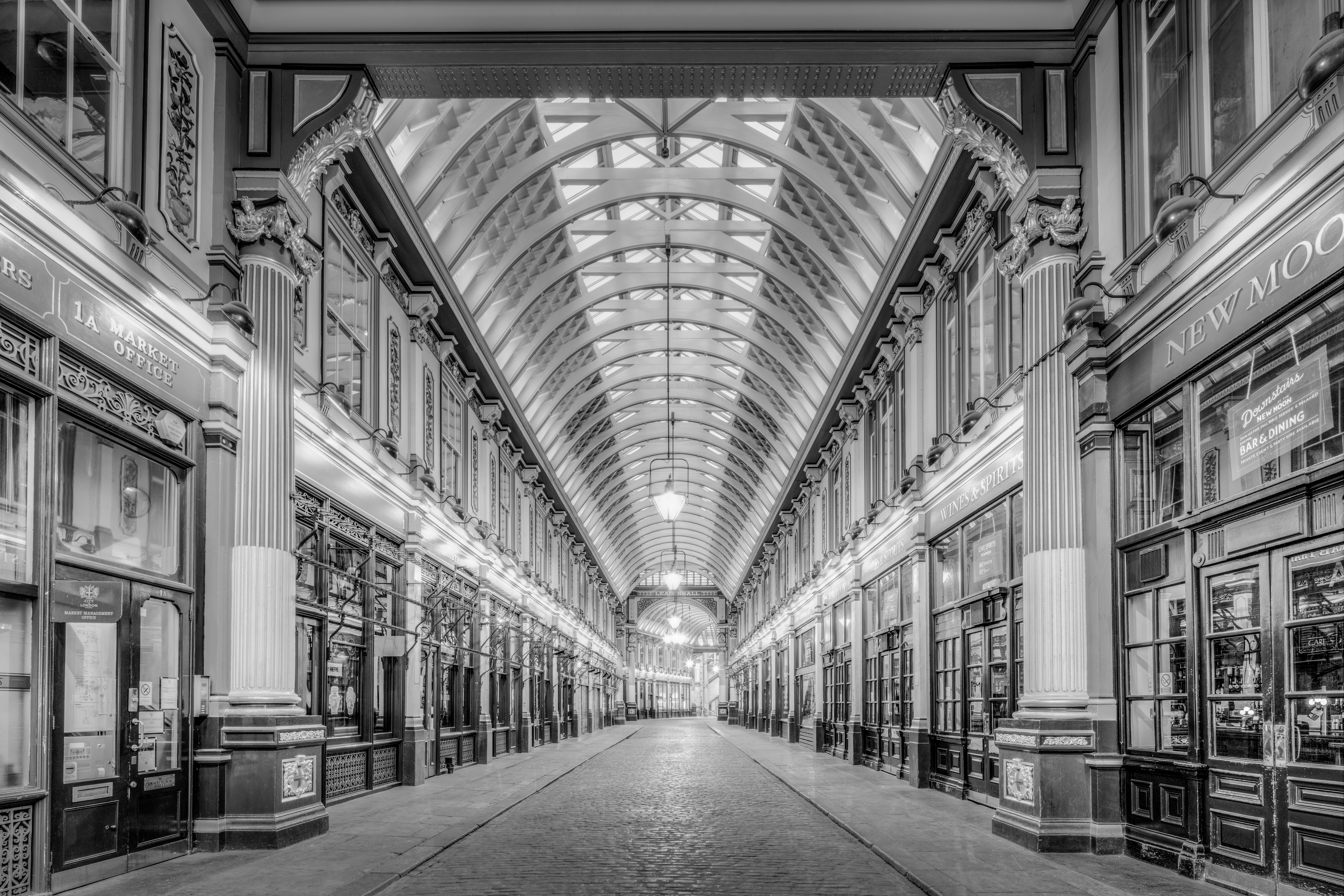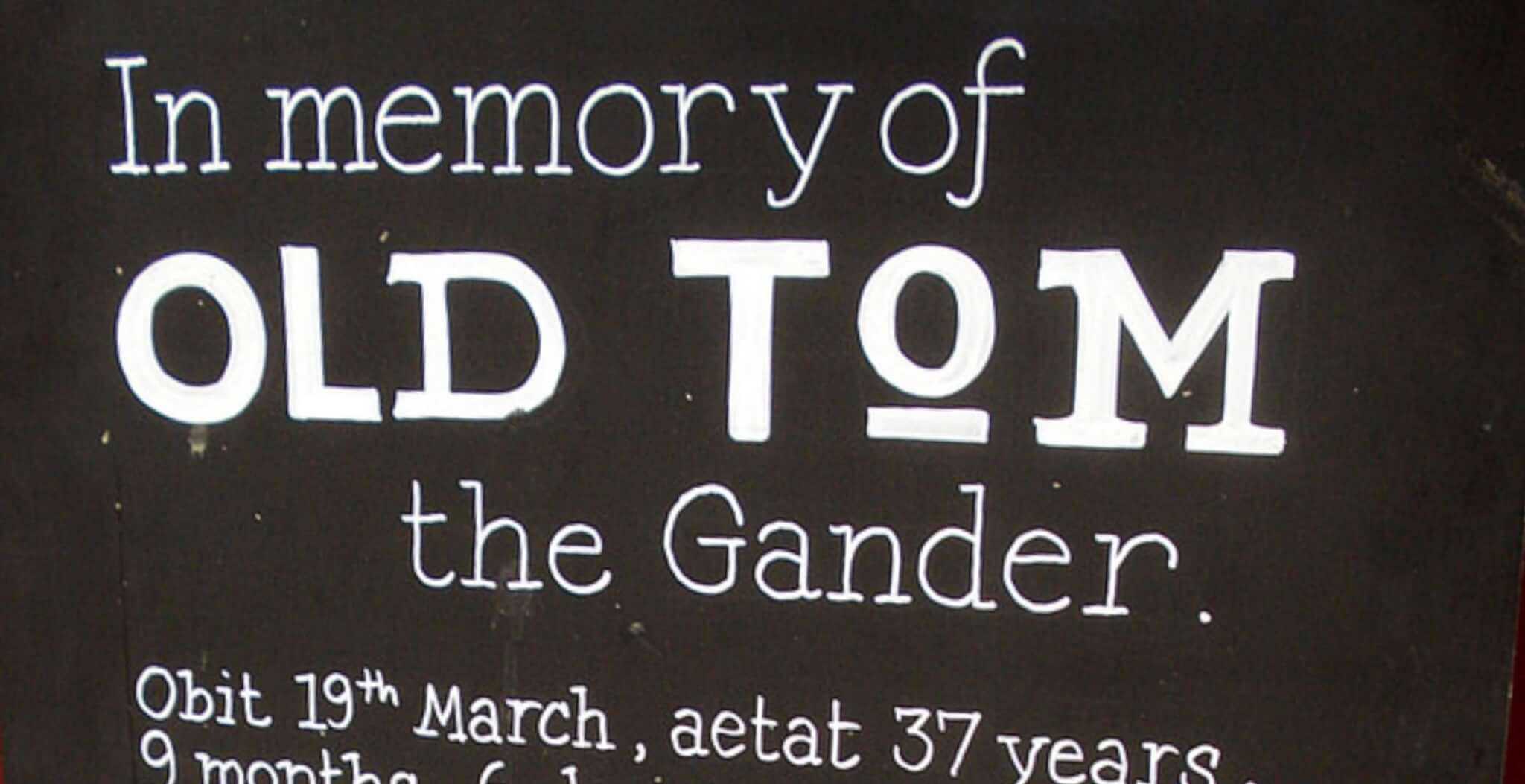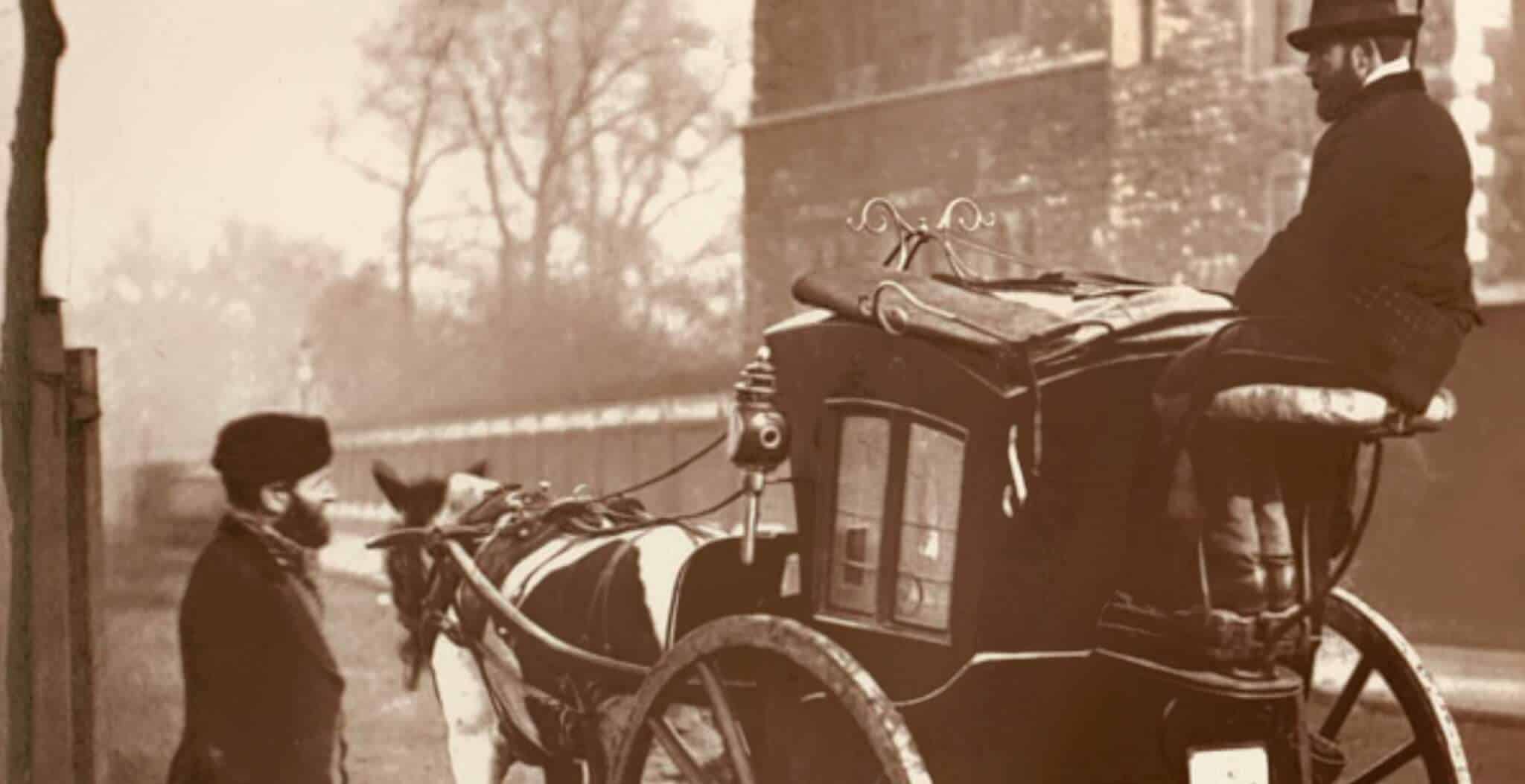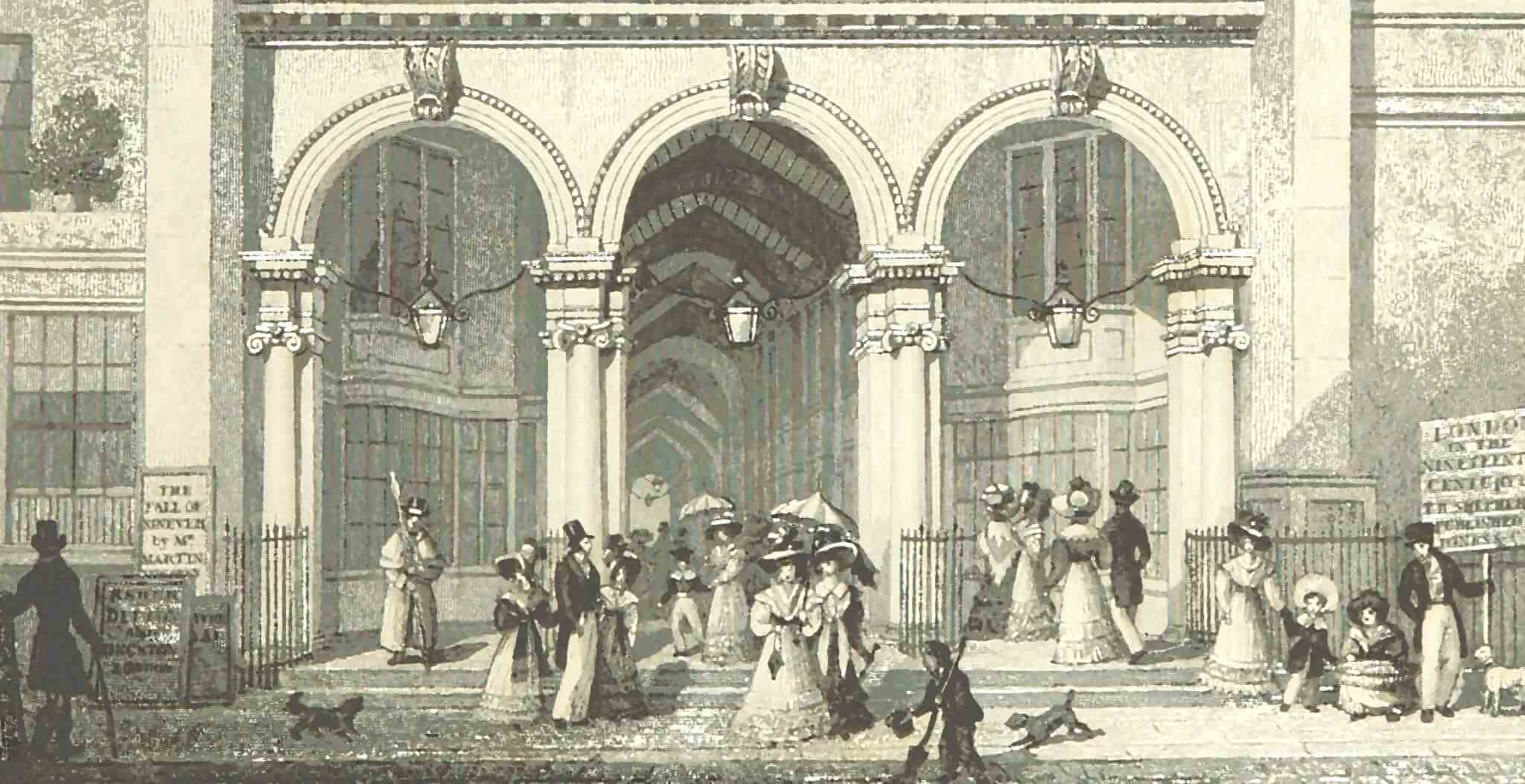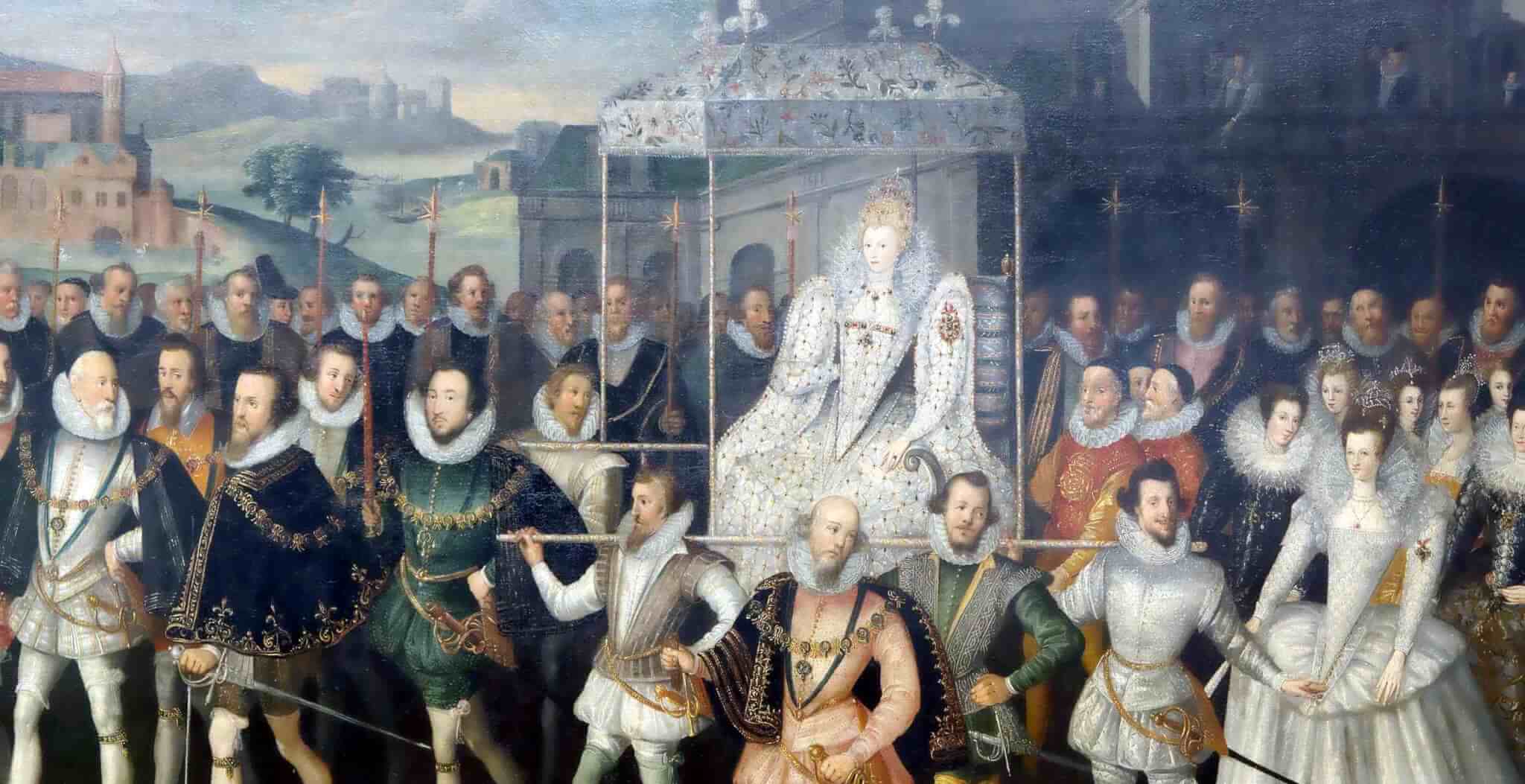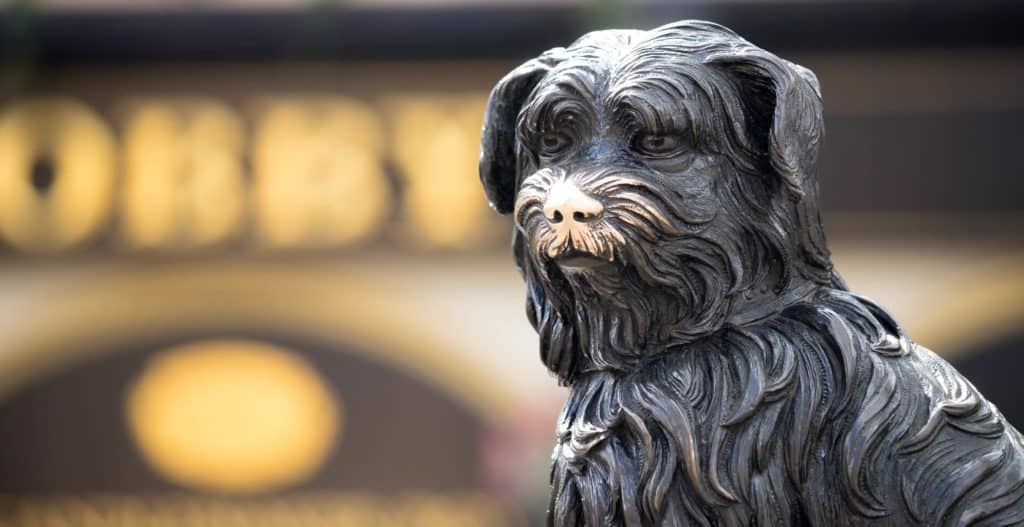Nestled between Gracechurch and Lime Streets in the heart of the city of London sits Leadenhall Market. The market began life in the 14th century as a series of courts behind Nevill House mansion, which was owned by Hugh de Neville, Chief Forester to Richard I, John, and Henry III and a member of Richard’s royal household.
Meat and fish were sold on the site from around 1321, with cheesemongers appearing in 1397. In 1408, the famous Mayor of London, Dick Whittington, was granted leasehold of the manor which he later gifted to the city in 1411, with the Corporation of London taking charge of the market.
When a fire destroyed the mansion house in 1484, it was replaced by an open market and the Lord Mayor of the time, Simon Eyre, provided a public granary, school and chapel as a gift for the city’s populous.
The market went from strength to strength, expanding to sell grain, eggs, butter, cheese, herbs and other foodstuffs over the next few centuries and becoming a hub for wool, leather and cutlery as well. Unlike the rest of the city, Leadenhall Market came out of the Great Fire of 1666 largely unscathed, with the only real damage done to a small part of the area which housed the herb market.
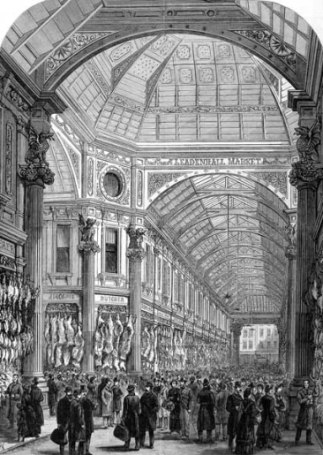
In the 19th century the market was redeveloped by the architect Sir Horace Jones from its original stonework into the charming wrought iron and glass structure we know today. He was also responsible for the design of London’s famous Billingsgate and Smithfield Markets famous for their fish and meat stalls respectively.
During this time, one of Leadenhall Market’s most popular residents appeared. This was Old Tom, a gander from Ostend in Belgium who is said to have arrived in the Capital having followed a female member of his flock who took his fancy! Despite the swift dispatch of the other 34,000 members of his party, somehow Tom miraculously managed to survive the dinner table and became a regular fixture at the market and the surrounding inns, who kept scraps aside for him.
Tom went on to live until the ripe old age of 37 when he died of natural causes and was buried on the market site. Pretty impressive for a gander living in such close proximity to a poultry stall, some might say very ‘plucky’ indeed!
So beloved was Old Tom that he even made it into the Times Newspaper! Below is his obituary, published on 16 April 1835:
In memory of Old Tom the Gander.
Obit 19th March, 1835, aetat, 37 years, 9 months, and 6 days.
‘This famous gander, while in stubble,
Fed freely, without care or trouble:
Grew fat with corn and sitting still,
And scarce could cross the barn-door sill:
And seldom waddled forth to cool
His belly in the neighbouring pool.
Transplanted to another scene,
He stalk’d in state o’er Calais-green,
With full five hundred geese behind,
To his superior care consign’d,
Whom readily he would engage
To lead in march ten miles a-stage.
Thus a decoy he lived and died,
The chief of geese, the poulterer’s pride.’
The market still remains as a Grade 2 listed site today, although many of the stalls have been replaced by high street retailers and the area may be more recognisable as Diagon Alley in Harry Potter and the Philosopher’s Stone or as the setting for numerous street parties, most notably during Queen Elizabeth’s diamond jubilee year.
However, you can still raise a glass to Old Tom at the market in the pub which bears his name; Old Tom’s bar.
For more historic sites in London be sure to check out our Secret London page.
